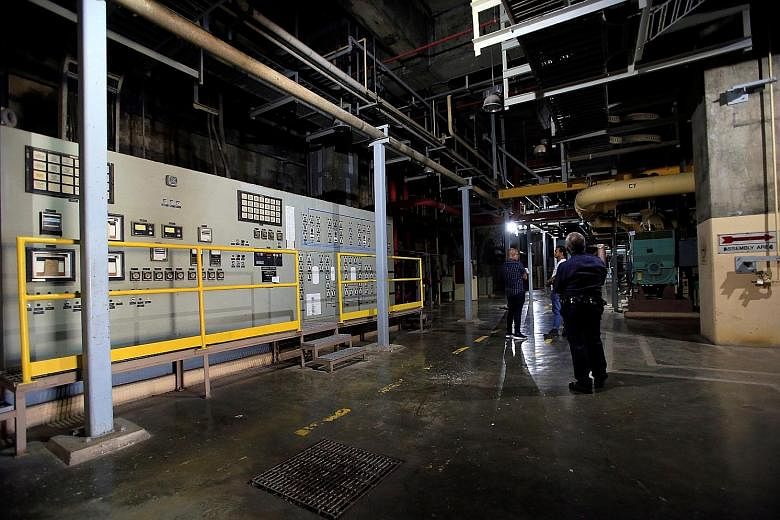MANILA • Filipino Wilfredo Torres was hired as a technician for South-east Asia's only nuclear power plant in the 1980s, but has spent the past decade giving guided tours at the never-used facility.
The Philippines spent US$2.3 billion on the 621MW Bataan Nuclear Power Plant, located 200km north-west of the capital Manila, but mothballed it in 1986 after the collapse of a dictatorship and the devastating Chernobyl disaster.
Now, there is a chance Mr Torres, 56, might get to see the plant in action before he retires in four years.
As power demand soars in one of the world's fastest-growing economies, the Philippines is looking seriously again at nuclear power and urging President Rodrigo Duterte to fast-track its revival.
"With the need for cheaper, reliable power, nuclear is ideal," said Energy Assistant Secretary Gerardo Erguiza.
Previous attempts to pursue nuclear energy in the Philippines have failed due to safety concerns and because central to the plan is the revival of the Bataan plant, built during dictator Ferdinand Marcos' rule.
Marcos ordered the Bataan plant built in 1976 to counter an energy crisis, convinced that nuclear energy was the solution to the Middle East oil embargo at that time.
-
BATAAN NUCLEAR POWER PLANT
US$2.3b
Cost of the plant, which was never used.
621
Megawatt capacity.
1986
The year it was mothballed.
From 2009, the government opened the plant to tourists for a fee, helping defray the cost of maintaining it, along with an annual state budget that was 32 million pesos (S$821,000) this year.
Coal fuels half of the Philippines' power grid, with natural gas and renewables each accounting for more than a fifth and oil the rest. With an economy growing at 6.8 per cent in the first quarter, Manila expects energy consumption to triple to 67,000MW by 2040.
By tapping nuclear, electricity costs will drop, said Mr Carlo Arcilla, director of the Philippine Nuclear Research Institute.
Philippine power rates, which are not state-subsidised, were ranked the 16th most expensive out of 44 countries polled in a 2016 study commissioned by power retailer Manila Electric. Japan topped the list.
Nuclear reactor builders Korea Hydro & Nuclear Power and Russia's Rosatom submitted plans last year to rehabilitate the Bataan plant, at costs ranging from US$1 billion (S$1.35 billion) to more than US$3 billion. Other firms that have shown interest include China's top nuclear power plant builder, China Nuclear Engineering and Construction, and Belgium's Tractebel.
Geologist Kelvin Rodolfo has repeatedly warned against the activation of the Bataan plant, saying it sits on an active earthquake fault that runs through a volcano, currently dormant. "A nuclear accident there would affect a much larger area than the Philippines alone, and so the Philippines cannot make the decision to activate (it) all by itself," said Dr Rodolfo.
International Atomic Energy Agency director-general Yukiya Amano met Philippine energy officials in February to discuss Manila's possible nuclear plans. An agency review mission to the Philippines is planned for later this year.
REUTERS

